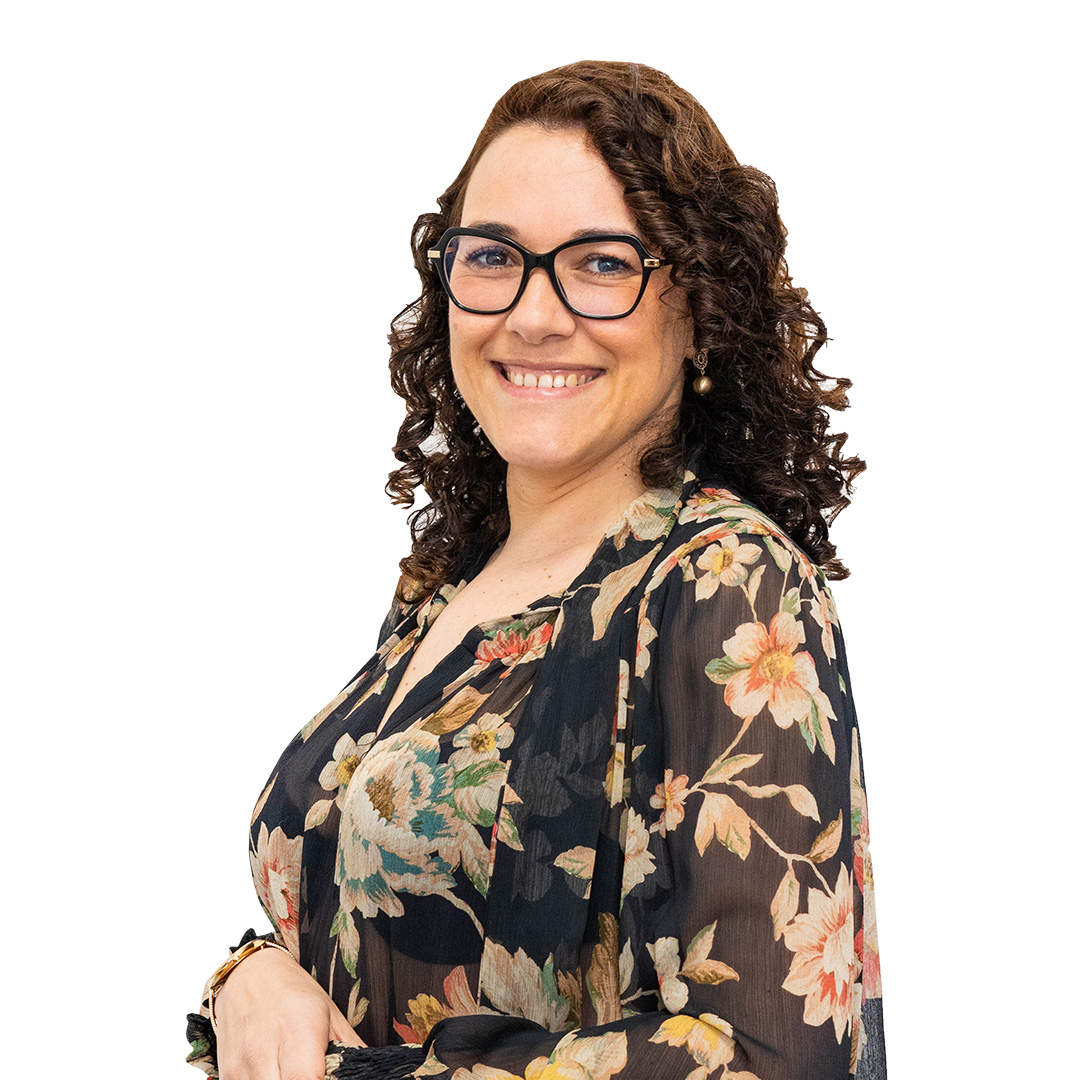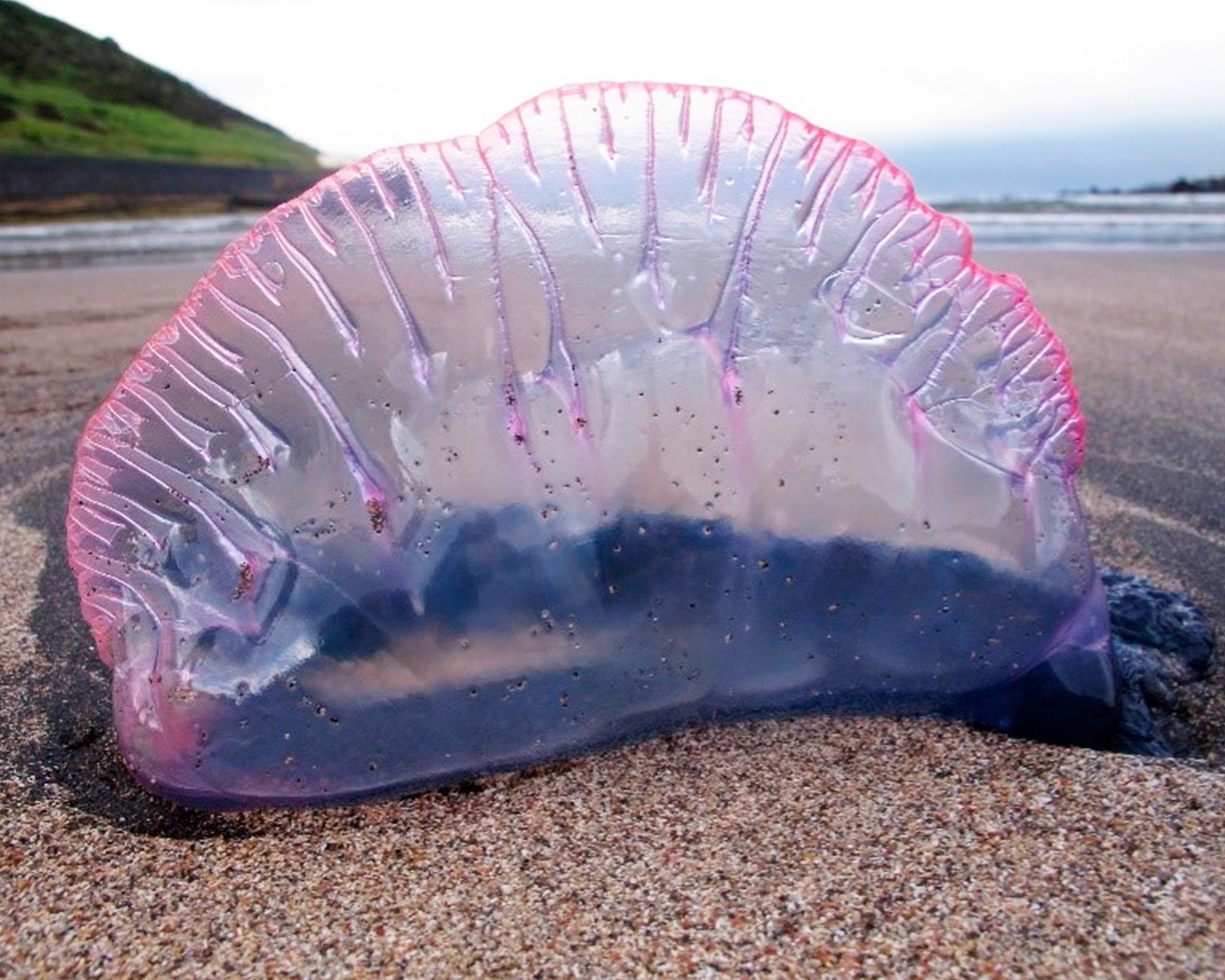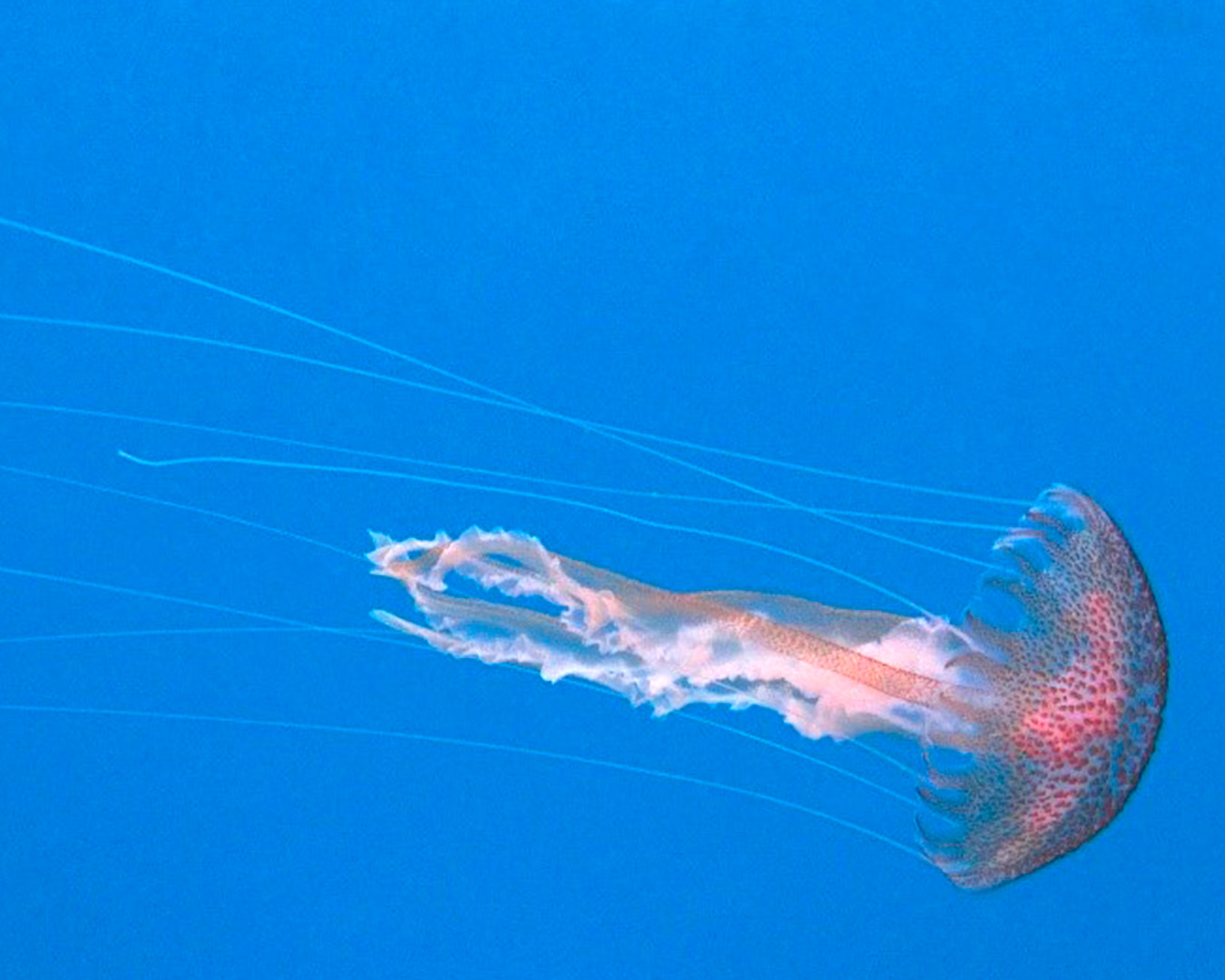
| Acronym: | Aguas-VivAZ |
| Cost Center: | 850 |
| Operation Code: | ACORES-01-0145-FEDER-000119 |
| Title: | Aguas-VivAz: Impact of jellyfish and other gelatinous invertebrates on the ecology and economy of the sea (tourism and fisheries) of the Azores |
| Start-End: | 01-03-2019 - 30-06-2023 |
| Entidade Beneficiária Principal: | Fundação Gaspar Frutuoso |
| Gestores da FGF: | Lúcia Cláudio |
| Responsible Researcher: | João Manuel dos Anjos Gonçalves |
| R&D Units: | OKEANOS - Instituto de Investigação em Ciências do Mar |
| Entidade | Montante |
|---|---|
| Total Eligible Cost | 188.405,34 € |
| Direção Regional da Ciência e da Tecnologia (15.0 %) | 28.260,80 € |
| PO Açores 2020 - FEDER (85.0 %) | 160.144,54 € |
Main Objectives:
Increase quality scientific production oriented towards intelligent specialization.
The inconveniences caused by the occurrence of stinging gelatinous marine invertebrates are well known in the Azores, with no year in which they are not widely publicized by the regional CMOs. Despite the impacts caused by these organisms on fisheries and tourism in the Azores, there is practically no regional scientific knowledge on this subject.
For the first time, we intend to study in an integrated way the dynamics of the occurrence of the main gelatinous marine species in the Azores, with the main objectives:
1) Review the marine biodiversity of the Azores in relation to gelatinous invertebrates, compiling information from different sources;
2) Study the annual and interannual abundance of the most frequent species (jellyfish and caravels), using classical and other more innovative methodologies;
3) Relate the abundance of these organisms to environmental variables (wind, temperature, salinity, nutrients, etc.);
4) Know the annual reproductive cycle of these species, using histological methodologies;
5) Genetically characterize the most common species of marine gelatinous organisms that occur in the Azores (“DNA-barcoding”);
6) Analyze the relevance and impact of these occurrences on the economy of the sea (tourism and fisheries);
7) Involve the local community in this study within the scope of “citizen science”;
8) Present solutions to mitigate the problems caused by these organisms;
9) Form a group of regional experts specialized in the scientific knowledge of these gelatinous marine organisms;
10) Increase regional scientific knowledge about the ecology, biology and taxonomy of these organisms.
Project Description:
This project will be carried out through the Okeanos-UAc R&D Center, located at the University of the Azores, on the Horta campus, which has facilities (laboratories, offices, diving center, etc. ), various equipment (for example, portable multi-parameter water quality probes, GPS), transport (vessels, etc.), services (administration, library, communications) and technical support services (administrative, accounting, laboratories, library, etc. .) needed to implement the project.
The geographic location of the Azores, practically in the middle of the North Atlantic, is a great advantage due to the regular occurrence of gelatinous macrofauna in the waters of the archipelago. This program will contribute to the understanding of a very important and neglected topic in the knowledge of the oceans, which is of great interest to the scientific community and also to society in general, due to its impacts on ecology, tourism and fisheries.
The traditional methods used to sample gelatinous organisms, using different types of nets, have the great disadvantage of undersampling these invertebrates due to the fragility of their bodies, which are easily damaged by the equipment, making its subsequent identification impossible. Thus, we will use new approaches that avoid the use of large zooplanktonic networks. We intend to use a mix of methodologies, from classic to more innovative ones. Traditional methods are based on tarnsects on land and in the sea (to assess the relative abundance of gelatinous organisms and their prey), histology applied to the study of the annual reproductive cycle of jellyfish and genetic identification (DNA bar code) of the most common species of gelatinous species. As innovative and less invasive methods, underwater (“scooters” and diving) and aerial (“drones”) video sampling stand out to assess the relative abundance of gelatinous organisms on the surface and immersed in their natural environment in some selected areas. of the Azores (Faial and S. Miguel), as well as the involvement of society in “citizen science” campaigns to study the occurrence and biodiversity of gelatinous invertebrates in the Azores. The information collected through these sources will be disseminated to society, mainly through a web page and/or an app.
Results:
The results of this project will be disseminated to the regional public administration, the scientific community, local schools and society in general through different procedures. The event reception form web page will be the main way of disseminating the results to the entire community, as well as communications during the university's open days. Information adapted to local schools will be provided in collaboration with local NGOs (OMA - Observatório do Mar dos Açores), school clubs and associations of parents and teachers, in order to educate them about the precautions to be taken in relation to the occurrence and contact of jellyfish. To that end, we will seek the involvement of Horta Hospital to provide medical advice.
The communication of results to the scientific community will be done through participation in specialized annual conferences (oral communications and/or posters) and in works to be submitted to open access journals.
The regional administration will also benefit from the results of this project, as it will receive periodic technical reports. More detailed baseline data will also be provided, if necessary, to be integrated into public databases (eg SIGMar-Azores).
It is expected that the data collected during this project will allow 9 scientific publications to be published in specialized journals (6 in international journals and 3 in national ones), to present 5 communications at congresses ( 2 national and 3 international), prepare 3 technical reports (one for each year of the project) and support 4 academic dissertations (2 master's and 2 doctoral).





